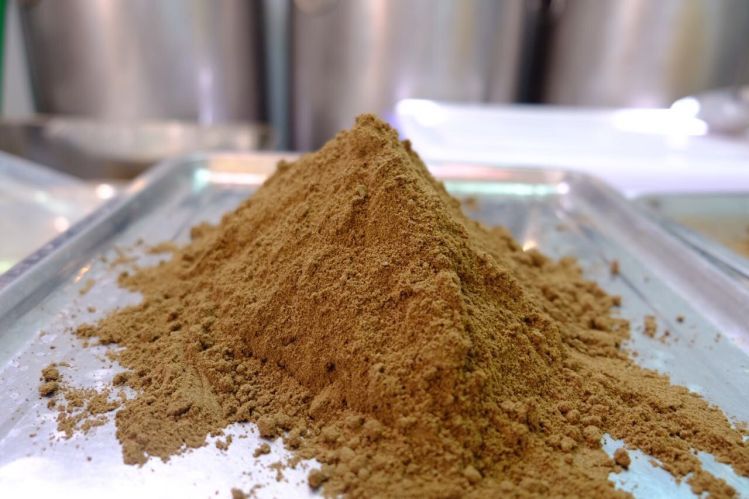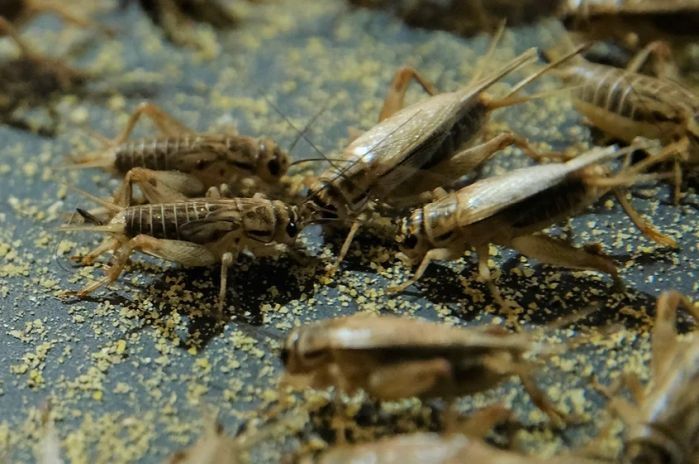- Vietnamese edible insect startup Cricket One has opened what it claims is Asia’s largest cricket processing facility and closed a series A round for an undisclosed “seven-figure” sum.
- The round was led by Singapore-based investor Robert Alexander Stone and supported by Cub Capital along with a Singapore-based family office.
- The new facility, in Binh Phuoc, north of Saigon, will initially process 1,000 metric tons a year, increasing to 10,000 tons over the next five years.
- While edible insect players such as Ÿnsect (mealworms) and Innovafeed (black soldier flies) have historically focused on animal feed markets, and Aspire (crickets) is primarily targeting the North American petfood industry, Cricket One is targeting human and petfood markets with cricket protein powders, textured cricket meat, cricket snacks and supplements.
The business model: Centralized processing, decentralized farming
Cricket One—which was founded by Nam Dang and Bicky Nguyen in 2016 and started commercial production in late 2017—started out by processing crickets raised by local cassava farmers in abandoned shipping containers. However, it has since adapted its model, cofounder Nam Dang told AgFunderNews.
“Farming takes place in various locations near the factory, and the output is then transported to the factory for processing. Instead of using shipping containers for farming, we have introduced a new approach.
“Farmers construct cricket sheds under our guidance, where we provide them with farming equipment and knowledge. The farmers manage the farms under our supervision, following our process and using our feed and eggs. They exclusively sell crickets to us, ensuring that all parties are actively involved in the collaboration process. Currently, approximately 45% of the output [of Cricket One] comes from [third party] farmers’ sites.”
Cricket One, in turn, also farms some of its own crickets, he added. However, processing is centralized, at a certified factory.
“While farming under the decentralized model is quite standardized and scalable, allowing us to increase capacity several times almost immediately, the processing factory often becomes the bottleneck due to the time required for construction, machine procurement, and certification,” said Nam Dang. “However, with this factory expansion, we now have enough manufacturing room for expansion in the next few years.”
Optimizing feed
So what does the company feed its bugs?
The formulation is constantly being refined and optimized, as crickets are what they eat, he explained. “We have been working with the [Vietnam National] University [of Agriculture] to study crickets’ nutrition needs and have developed more than 60 feed recipes for crickets based on popular byproducts [upcycled agricultural waste] such as cassava tops [leaves and bran].
“The cricket feed is formulated in fine powder form and is then OEM produced at a large feed mill in Vietnam. We are handling hundreds of tons of feed each month.”
And when it comes to the unit economics of running an edible insect business, he said, feed is key: “The largest cost in the cricket supply chain is the feed cost, followed by energy (mostly for cricket processing) and labor. When you have efficient feed, you can significantly improve your margins.”

Automation and scale
Automation and scale are key to achieving attractive unit economics in edible insect production, he said. “[With mechanization], harvesting a breeding container of 1 sqm in size is reduced from 10 minutes to 20 seconds.”
But that doesn’t necessarily mean super-high-tech approaches, he said. “We prefer simple innovations that are low cost but still get the job done and have a better return on investment. We automate cricket farming at critical points; however, the whole model is about empowering the cricket farmers – the technologies are there to assist the farmers and make their jobs easier and more productive.
“At our farms, the feed and water supply for crickets is autonomous. We don’t need humans or robots to provide water for crickets. Cricket harvesting, which is often the most labor-intensive part, is also mechanized.”
Labor costs: ‘The production line of 1,000 metric tons per year needs only five workers’
As for labor costs at the site, which sources 40% of its energy needs from solar power, he said, “The cricket processing site is a closed system. The moment crickets are harvested and transported to the factory, they go through the transformation process seamlessly from cleaning, dehydrating, defatting, grinding, and extruding. The production line of 1,000 metric tons per year needs only five workers.
“When at full capacity [likely in five years], we will process about 10,000 tons per year.”
To place this in perspective, Aspire, which has recently built what it claims is the world’s largest cricket processing facility in Canada, is aiming to get to 50-60% of capacity by the end of this year at a plant with an annual capacity of 12,000 tons of frozen whole crickets.
Human food, petfood, animal feed: Where is demand for cricket products coming from?
Asked about where the demand is coming from for edible insect products, he said Cricket One is seeing demand from human food, petfood, and animal feed (primarily aquaculture), and now works with 15 distributors globally in 20 markets.
“In the EU, Cricket One is currently the only manufacturer outside the region authorized to sell cricket protein,” he claimed. “We see strong demand growth in all three market segments, especially from large companies.”
The human edible insect industry is gaining particular traction in Vietnam, Thailand, and Cambodia, where “over 70% of the population is open to consuming crickets,” he claimed. “However, Asia lags behind Europe in terms of product innovation. Most edible insects consumed in Asia are in their whole form.”
That said, cricket powder is now being engineered into various snack applications for Asian markets, he said. “The primary objective is to replace part of shrimp with cricket in snacks due to its affordability and sustainability, while providing equal nutrition.”
There are cultural barriers to edible insect consumption in Europe as they have not traditionally been consumed, he said. “Nevertheless, Europe boasts an incredible level of product innovation, variety, and market education. Numerous startups and small-to-medium enterprises are leading the way and major retailers in Germany, France, Italy, and the Czech Republic are expected to offer insect-based products soon.”
‘Merely selling cricket powder will not stimulate growth’
That said, growth “is directly proportional to product innovation and market education efforts,” he argued.
“Merely selling cricket powder will not stimulate growth. Manufacturers like ourselves are venturing downstream by offering cricket snack brands such as our Rec Rec brand in Vietnam. Additionally, we provide semi-finished products including chips, coated crickets, and third-generation snacks to facilitate faster and easier product launches for clients.”
When it comes to petfood and animal feed, he said, “These segments show promise and high consumption rates across the board. However, they require scientific-driven approaches involving extensive R&D trials and client collaboration, while pricing must be reasonable. This segment is only viable for companies capable of optimizing their costs.”
Consumer products: Rec Rec
Rec Rec — Cricket One’s first consumer product — was launched in February, he said. “The first products under the Rec Rec umbrella are seasoned whole crickets, which are available in nearly 200 retail outlets and rank among the most popular snacks on e-commerce platforms like Shopee, Lazada, and Tiki. These products are also being cross-sold by top beer brands and we are bringing 15,000 of these to consumers each month.
“The cricket chip, which comes in both ready-to-cook and ready-to-eat forms, will launch in October. With this, we are challenging the dominant shrimp snack market worth $200 million in Vietnam.”
Further reading:
Aspire Food Group ramps up world’s largest cricket production facility, scouts for 2nd site




